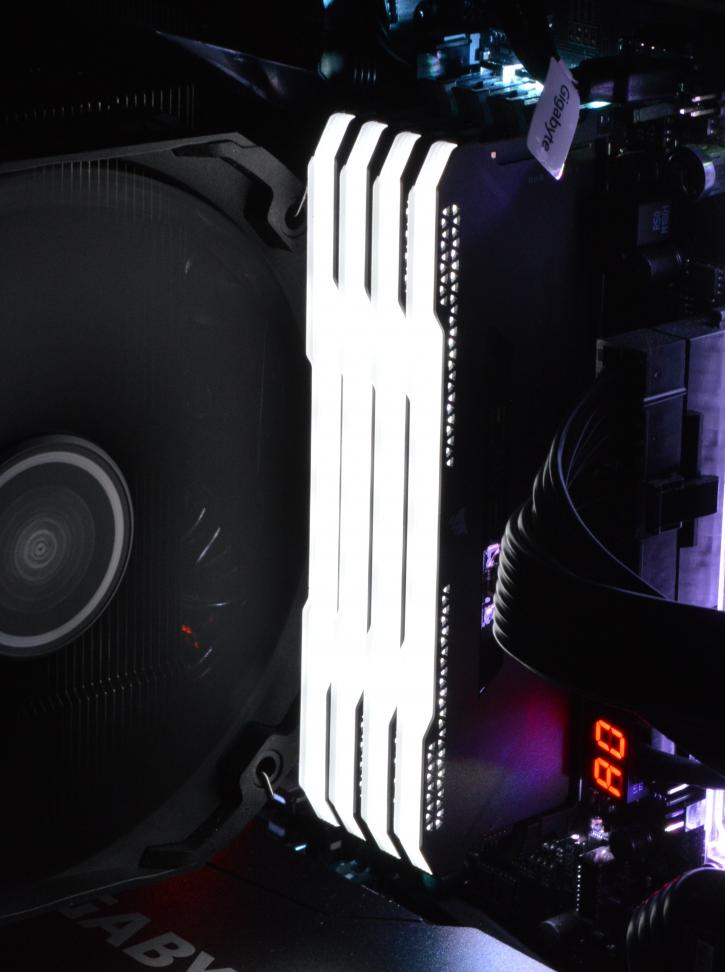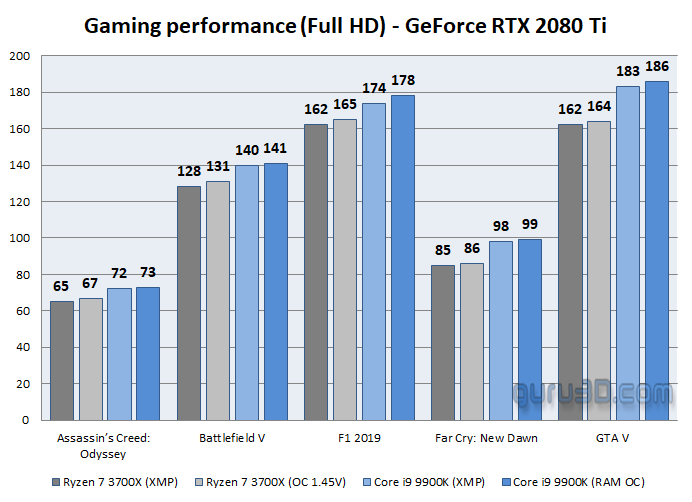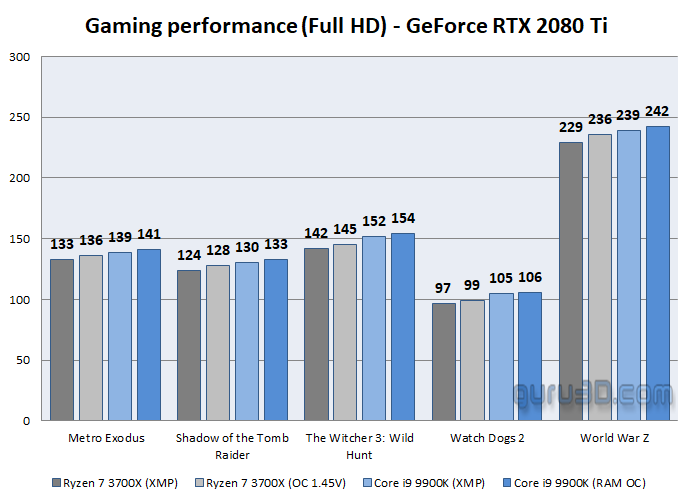Final Words & Conclusion
Final Words & conclusion
The Corsair Vengeance RGB Pro SL series is overall a nice offer. It’s a very good-looking kit with the individually lit RGB with good default settings (both 3200 CL16 and 3600 CL18 should be fine for most of the users) that allows users to squeeze a bit more of it. The choice of frequencies is as you can see limited (and I can – pretty average), but not that’s an overclocker’s dream product and that shouldn’t be a problem. You can select from a broad range of capacities – I mean from 16 GB to 128 GB. Every one should find its matching quantity. There’s a choice of color, so that’s not only the (matte) black but also the white variant available. This should make it easier to match the system color. The four 8 GB modules that we got, with a default frequency of 3600 MHz and timings of 18-22-22-42 do what they supposed to. No fireworks here in the default status, but also definitely no shame. With XMP enabled, this kit is clearly targeted at customers interested in a good out-of-the-box performance. But what happens if you tweak it? That’s not a fascinating story. Although we see here the Samsung B-Dies - we achieved 3600 CL16 on the AMD system (so the same as for the Patriot Viper Steel RGB that had CL20 in default), and 4000 CL19 on the Intel, which is actually nice, but the same as the Patriots. While we’re at it, we’d definitely recommend sticking to 3600-3733 MHz on AMD systems to keep the Infinity Fabric divider at 1:1 (this way you avoid any score decrease at 2:1). For Intel systems, the 4000 MHz looks good, but over 4000 would look even better. It’s also not unreasonable to assume that you could go even higher with a Z490/Z590 board (I’ll start using the latter in the next RAM review), as these typically bring better overclocking capabilities (well that’s also CPU related as the Comet Lake has a better IMC - Integrated Memory Controller). Additionally – the Ryzen 5000 series would also make the overclock of the RAM better.
Aesthetics
Corsair made the Vengeance RGB Pro SL look really good. The heat spreader is in (matte) black (there’s also a white variant available), so it’ll look nice in any system, and the 10 RGB LED individually lit - synchronizes with other components as it should have.
Tweaking
The memory chips used here come from Samsung, and they’re the famous B-dies. Well, not the best bunch used here. We achieved a nice CL16 at 3600 Mhz and 1.45 V (1.35 V is the baseline value) on AMD, and CL19 at 4000 Mhz and 1.45 V (1.35 V default) on Intel. You can always try to lower the latencies and go even higher with the frequency (especially if you have a Z490/Z590, rather than a Z390 one). To be honest I was expecting more from the B-dies.
Gaming performance
That's a 1920x1080 (Full HD) gaming chart based on the GeForce RTX 2080 Ti. You can see the differences between the 8 core CPUs from AMD and Intel and what improvement you can achieve after overclocking each system's memory. Is it worth it? It's your call (but you need to remember the OC is free and only needs some time to set/test the stability).
Conclusion
The reviewed Corsair Vengeance RGB Pro SL comes with a default frequency (3600 MHz) that should be enough for the majority of users. The saved XMP 2.0 profile is supposed to make your life easier and make the best compatibility available. The stock performance is in a range of what was expected. There’s some headroom still, you can try to overclock this memory a bit. With the reviewed kit, on our X470 and Z390 platforms, it was possible to achieve 4000 MHz with CL19 on the Intel system, whereas on the AMD one we stayed at 3600 Mhz to keep the Infinity Fabric divider at 1:1, but with optimized timings and CL16. It’s a nice result, but we expected more from the Samsung B-Dies. You could probably achieve even more with a Z490/Z590 system (or with the Ryzen 5000 series), though, but we don’t have that on our test bench (yet, for the Intel the change will apply already for the next RAM review). Either way, you need to remember that reproducibility is never guaranteed, and your results may vary. Moving on to compatibility, the heat spreader is a relatively low-profile one (44 mm), so you shouldn’t encounter any clearance problems with most CPU coolers. The 32 GB capacity may seem a lot to most users nowadays, and it was becoming more common due to dropping RAM prices (that actually has changed recently). The 4 x 8 GB kit (black 3600 CL18) is priced at ~ USD, which is rather reasonable for the things you get here. In the end, we decided to give Corsair a “Guru3D approved” award for this very good-looking kit. The performance is good, the looks even better, there’s some OC headroom. That’s it – it’s a RAM that you put in the system and forget about it. One thing that we could advise Corsair is to provide also some higher than 3600 MHz kits for this series, but that’s a bit of nit-picking. Over and out.
- Sign up to receive a notification when we publish a new article
- Or go back to Guru3D's front page.




